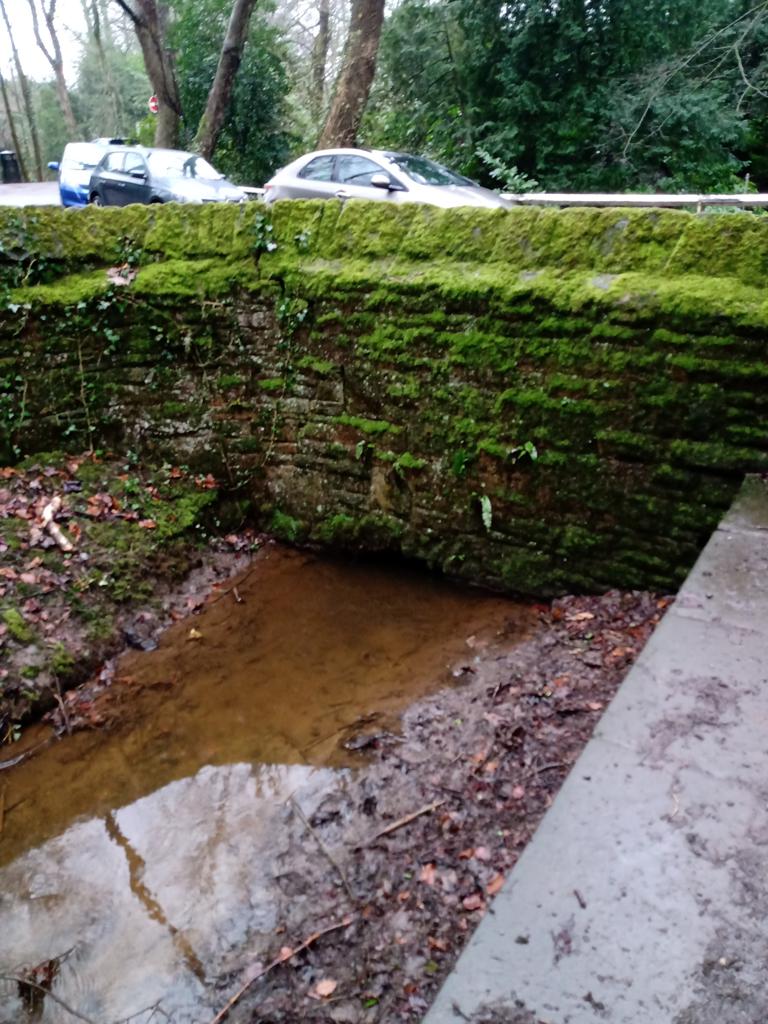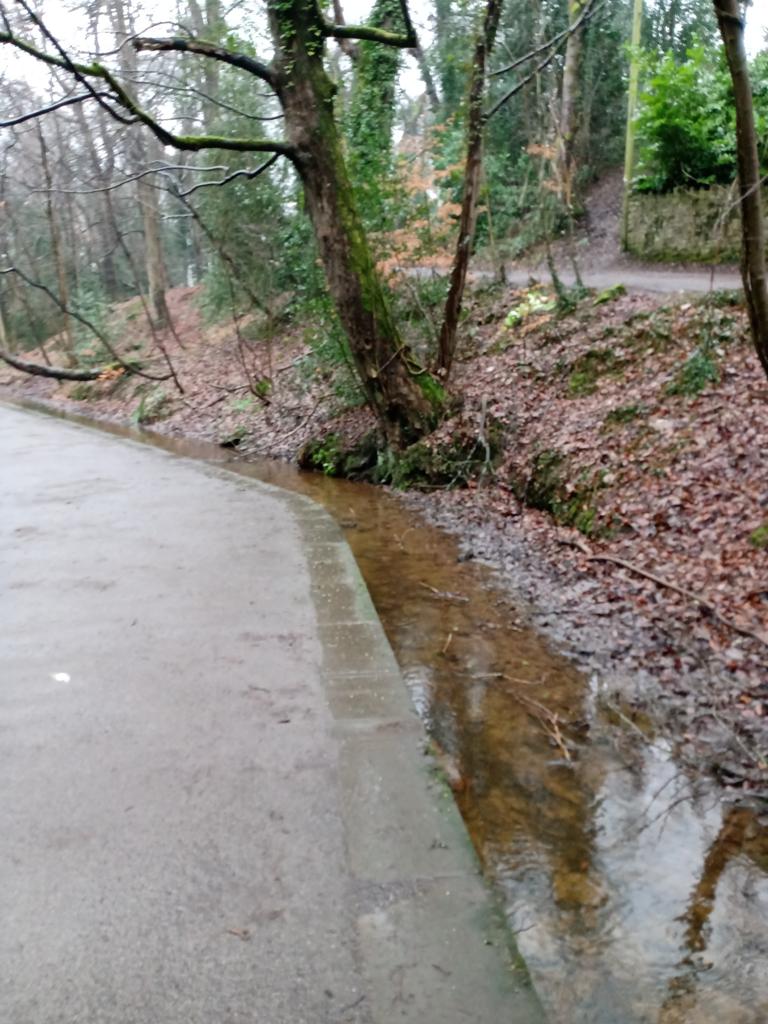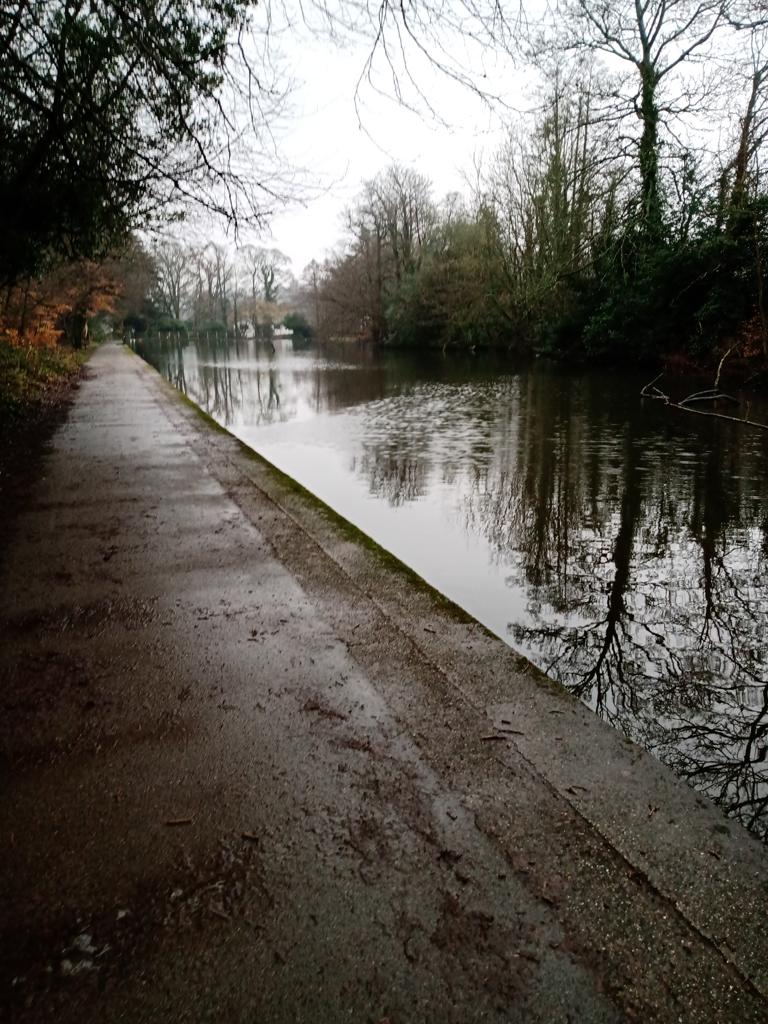A Large Fall
Writing Challenge 2025
Posted by Chris Sissons on Mar 19, 2025
Writing Challenge » Chris Sissons
For the last several years, I've completed a Writing Challenge with many people all over the globe. We write something inspired by prompts for 21 days plus an introduction. This year, the prompts are about place, and I've chosen the River Porter in Sheffield. I hope some readers might take part, so I have a couple of challenges; see the paragraphs in bold towards the end.
Today, we visit Wire Mill Dam. As kids, we had another name for it, which will be revealed soon. It’s perhaps helpful to write a little more about the River Porter in general, though.
The river can be divided into two parts. There’s the Porter Valley, which is my main focus for the first half of these posts. It’s the part of the river I’ve known since childhood. Then there’s the Porter as it passes through the city and I’ll come to that later. It’s very different.
The Porter Valley had 8 wheels and the rest of the river had 12. Six of the 8 in the Valley survive (all but one without wheels) and one in the rest of the course survives. The other Sheffield rivers had wheels as well but I think it’s safe to say, Wire Mill is extraordinary.

This photo is where water from the Porter enters the head goyt. The river is across the road where the cars are and comes directly from Forge Dam, the last (or first!) of the dams. This is the water that feeds Wire Mill. All the dams have head goyts and some have tail goyts, although usually the water falls back into the river somewhere in the vicinity of where the wheels were.

You can see the head goyt goes a long way. It’s far and away the longest on the Porter and most likely in Sheffield. For a long time, I thought this was the tail goyt but when I looked closely, I saw the water flowing towards the dam. It is hard to work out what’s going on because the dam seems to be higher than the goyt!

Obviously, it isn’t and you can see the tail goyt in the foreground here and the water from the head goyt flows in at the background. The photo at the top of this post is a view of the rest of the dam.
The long head goyt means the river falls away to about 60 feet below the dam. This means when it was a working mill, it was more powerful than other mills, as a rolling mill. It was driven by two wheels, each 11 feet in diameter.
This massive fall confused me for a long time as I couldn’t see how the water could get from the Porter into the dam. Also head and tail is at the same end of the dam, which is unusual.
For some years, my father drove us out to Wire Mill in the spring. We set out to do something that is very much frowned upon today. I suspect he did the same thing when he was a lad.
He led me around the back of the dam, along a muddy path among the elderflowers. We would find a suitable spot and with a fishing net scooped frogspawn into a jar.
At home we watched the spawn hatch into tadpoles. We fed them pondweed and perhaps a bit of lettuce. Eventually, they sprouted legs and became carnivorous. Now we fed them on bacon or bits of meat. They began to disappear … I didn’t work out where to until much later. We’d end up with a few tiny frogs and I don’t remember what happened to them.
This was 60 or more years ago and we were unaware of the environmental implications. I went on to study biology at University and maybe this was in part my grounding in that subject.
And as a child, Wire Mill was, of course, the Tadpole Pond!
How might posts of this type be used for marketing? Think about how you might use this post or a post like it to promote your business. I add a few thoughts after each post, like this:
Did you find the description of Wire Mill interesting? Maybe if you are interested in indstrial history or water engineering. Perhaps otherwise it is a bit dry. It's very tempting as business owners to dive into the technicalities of our trade. However, it is worth pausing and considering before you do this. Are people you meet for the first time likely to be interested in the details of what you do? Worse than that they may not be interested ecen if your details are fascinating. Why should I be interested? I have my own problems and I want to know whether you can help me with them.
There is a place for technical descriptions and that's close to a sale (either side of it) when a potential customer asks for more information. Before that they are more interested in whether you understand their problem or perhaps your adventures with tadpoles!
My other challenge is for Sheffielders. Do you have anything to share about the Porter? Your experiences along it, bits and pieces of history you've uncovered, folklore you've heard. If you remember something, please share it in the comments. (Or maybe you are more familiar with other rivers in Sheffield, you could share those too.) Let's see what we can find out over the coming weeks.
This is the fourth of 21 stories about the Porter. The last story was: The Roughs. The next is: Rattening.
This is a view of Wire Mill Dam with the head and tail goyts behind the photographer. (For some reason, this is not uploading to the header image.)

Comments
Leave a comment.
Leave a comment.



 )
)